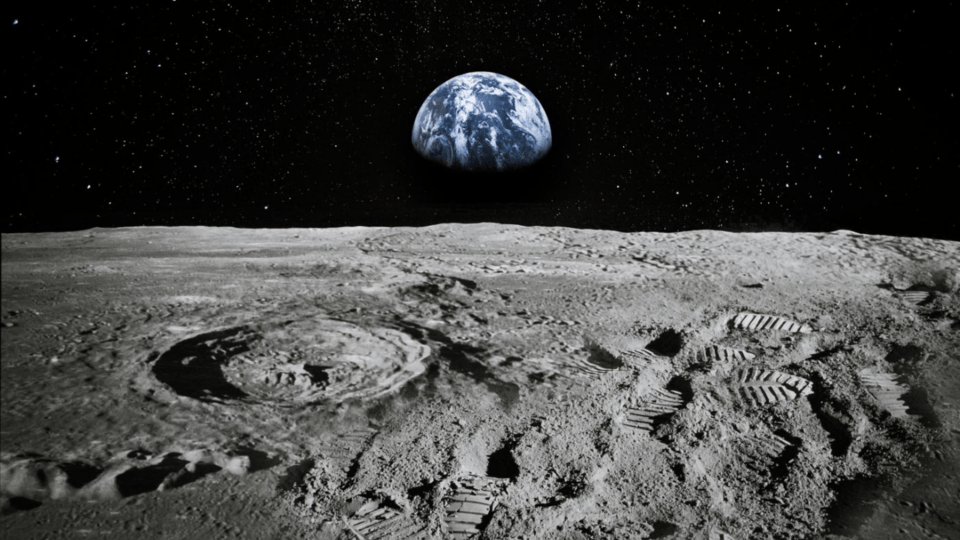From our earliest days, stories of the moon have captivated us. In moments of fear, soothing words painted a reassuring image—a vigilant guardian residing on the moon, watching over us. The moon emerged as an unparalleled beauty, overshadowing everything else in the world.
Referring to the moon as “Chanda mama” or moon uncle felt innate. In India, where the Earth is revered as a maternal figure, the moon’s companionship with our planet resonated deeply. Like a brother supporting his sister, the moon’s unwavering presence evoked kinship—a feeling that turned the moon into a lasting friend, an ancient confidant of Mother Earth.
Also Read: Countdown Commences for Chandrayaan-3
The moon’s luminous glow carries an eerie enchantment—a tranquil spectral presence concealing enigmatic secrets. Earth’s lone satellite, a distant companion, has graced our existence with its radiance, accompanying us through solitude and exploration. On long nights, even in isolation, a simple upward glance toward the dark expanse provides comfort, as if the ‘man in the moon’ shares a compassionate gaze.
Our Moon remains humanity’s sole extraterrestrial connection. Though it might be the only one we’ve touched, it’s at the heart of countless stories and myths spanning cultures and continents. Whether it’s the Maoris’ belief in the moon as husband to all women or Native North American tales of its capture by a hostile tribe, the moon’s allure and love’s possessive grip tie all narratives together.
As a lunar satellite, the moon embodies divine power and the feminine essence of love, intertwining cultures, poetry, and literature. From cosmic debates to mythical sagas and love ballads, the moon’s fascination endures. From Shakespearean verses to the musings of rural poets, the moonlit canvas of romance finds its resonant voice. Does the moon’s nocturnal ascendancy fuel the flames of amorous contemplation?
The moon is a symbol of beauty—a celestial gem with its imperfections. Every 28 days, flaws and blemishes fade as it becomes whole again, its radiance surpassing imperfection and embodying sacred perfection. It’s akin to a mysterious lover, revealing itself gradually. When fully revealed, past scars become insignificant compared to the ecstasy of beholding it in its entirety. Just like humans—especially women—concealing scars and flaws, yet shining brightly, radiating true beauty.
The phrase “I love you to the moon and back,” universally understood, encapsulates boundless affection. The moon symbolizes enduring love, eternal life, and life’s cyclical nature. As the eminent nocturnal presence, its glow reminds us of our universal connections. The moon’s phases mirror life’s and love’s stages—the waxing and waning, the highs and lows. Cultures worldwide associate the moon with femininity and fertility due to its connections with ancient mother goddesses. This feminine symbolism enriches the phrase’s significance, as these goddesses embodied protective and healing qualities.
Beyond romantic contexts, “I love you to the moon and back” transcends, symbolizing profound family and friendship bonds. From unwavering paternal connections to intimate partnerships, the phrase wields language’s power to convey warmth and admiration. Even Venus, the love planet in Greek mythology, bows to the moon’s enduring charm in the celestial realm. The moon takes center stage in expressions of affection, a muse woven into lyrics that juxtapose its silvery glow with passionate ardor. The moon’s significance traverses life’s phases. It’s a tender endearment from mothers to children, an emblem of affection among lovers.
But the moon is more than just romance—it’s tied to human behavior. During the Middle Ages, it was thought to trigger seizures and influence fever and rheumatism, giving rise to terms like “lunacy” and “lunatic.”
In recent times, the moon has shifted from fantasy to reality. India’s lunar mission, culminating in the historic landing of the Vikram lander, bridged the gap between the celestial and the tangible—a reunion with an old friend.
The moon’s radiant presence graces both day and night, an unwavering sentinel. Legend assures that the moon never truly wanes, standing watch in the sky, casting a gentle nocturnal glow, and steadfastly maintaining its place throughout the daylight hours.
As an independent media platform, we do not take advertisements from governments and corporate houses. It is you, our readers, who have supported us on our journey to do honest and unbiased journalism. Please contribute, so that we can continue to do the same in future.

